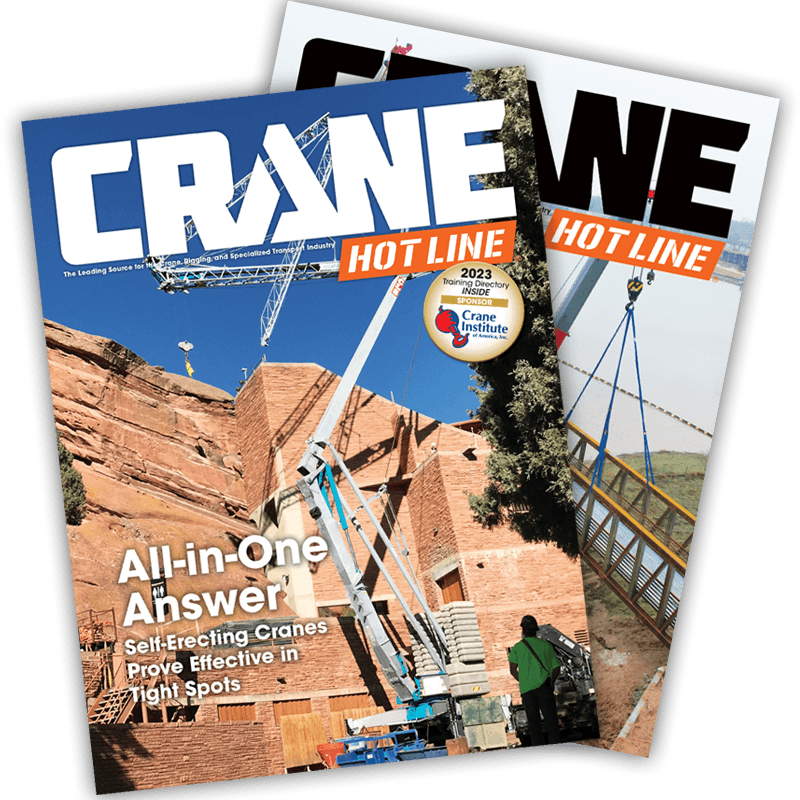Hazardous Environments Require Special Explosion-Proof Equipment
Jeff Bailey
Jeff Bailey is president of Man & Material Lift Engineering, Cudahy, Wis., which manufactures specialty market and custom-designed aerial lifts. Bailey has more than 15 years experience in various engineering positions in the aerial lift and crane industries. For more information on EX lifts, go to www.manliftengineering.com.

January 24, 2007 • Aerial lifts in paint booths, petrochemical plants, aerosol plants, grain processing plants, plastic media blasting booths, and underground tunnels are potential dangers in these hazardous environments and are required to be explosion proof.
Hazardous environments usually contain amounts of explosive gases or dust either during normal or abnormal operations. The National Fire Protection Association (NFPA) discusses hazardous environment locations and protection methods in several documents including the NFPA 70 (National Electric Code), which contains detailed classification of hazardous areas and electrical requirements for equipment used in those areas. The International Electrochemical Commission, or IEC, is an international committee that has similar classifications.
The NFPA divides hazardous areas into three classes, two divisions, and seven groups. The purpose of creating the complex designation scheme was to match conditions with protection methods. The three main classes are flammable gases (I), combustible dusts (II), and ignitable fibers and flyings (III). Subsequently, there are two divisions.
Division 1 is the more serious hazardous area and is define as:
- Locations where volatile flammable liquids or liquefied flammable gases are transferred from one container to another;
- Interiors of spray booths and areas in the vicinity of spraying and painting operations where volatile flammable solvents are used;
- Locations containing open tanks or vats of volatile flammable liquids; drying rooms; or compartments for the evaporation of flammable solvents;
- Locations containing fat- and oil-extraction apparatuses that use volatile flammable solvents;
- Portions of cleaning and dyeing plants where hazardous liquids are used;
- Gas generator rooms and other portions of gas manufacturing plants where flammable gas can escape;
- Inadequately ventilated pump rooms for flammable gas or for volatile flammable liquids;
- Interiors of refrigerators and freezers in which volatile flammable materials are stored in open, lightly stoppered, or easily ruptured containers; and
- All other locations where hazardous concentrations of flammable vapors or gases are likely to occur in the course of normal operations.
Division 2 areas are less hazardous and are defined as:

Enlarge Image
The PM54 is an AC-powered stationary lift that is classified for dust explosion proof Class II, Division II.
- Areas where volatiles are confined within closed containers or closed systems from which they can escape only in the event of the accidental rupture or breakdown of such containers or systems or in the event of abnormal operation of equipment;
- In locations in which ignitable concentrations of gases or vapors are normally prevented by positive mechanical ventilation but where such concentrations can become hazardous through failure or abnormal operation of the ventilating equipment;
- In locations adjacent to Class 1, Division 1 locations and to which ignitable concentrations of gases or vapors can occasionally be communicated.
The seven groups are categorized based upon a material's relative volatility as compared with those of acetylene (A), ethylene (B), hydrogen (C), and propane (D), as well as metal dusts (E) and other combustible dusts including coal, coke, carbon black, and charcoal dusts (F), and grain and wood dust (G). these are used as points of reference as to the degree of volatility of a given area.
![]()
Equipment operation in hazardous environments
To safely operate aerial lifts and other powered equipment in hazardous environments, the machines must meet either the NFPA DY or EX designation. It is important to note that many professionals are confused about these designations and often believe that equipment designated as EE is approved for explosive environments. It is not! EE machines have minimal spark protection and do not comply with the strict electrical requirements of NFPA 70 (NEC) for hazardous environments.
As a regulating body with the enforcement authority, local fire departments can identify and classify a hazardous area during routine inspections. They also can determine if equipment used in a hazardous area conforms to the appropriate approval rating. However, this level of inspection detail is often overlooked as inspections are mainly focused on debris, extinguishers, exit signage, and fire plans. OSHA also has regulatory and enforcement authority, deriving its standards from NFPA and ANSI, but it usually does not perform inspections unless a complaint is received or an accident has occurred. Other influencing factors are insurance companies and in-house safety committees and professionals.

Enlarge Image
The T80EX Factory Mutual approved boom lift uses an EX enclosure to house electrical components, an EX-rated battery box, and an explosion-proof motor assembly.
Once the machine and environment designation are established, equipment owners need to decide what type of power they prefer. Batteries are the most popular, and a batter-powered scissor lift used in a paint booth, for example, would typically house the battery box and electric motor inside an explosion-proof box. All electrical controls would be intrinsically safe or hydraulic, and rigid, sealed conduit pipes enclose all wiring. Tires use specially compounded electrically conductive rubber to ground the machine to prevent electric sparks.
If the application is complex, a custom lift may be required. For example, very hard-to-reach surfaces, such as the interior fuselage of an aircraft, may need to have a telescoping boom that extends horizontally but also moves vertically while staying horizontal, as well as provide sideways access with the addition of a jib. In this case, the same codes have to be followed with respect to producing an EX lift.
For equipment owners using aerial lifts and other power equipment in volatile environments, one of the key considerations is the primary power source. Next is the configuration of the machine • will a scissor lift provide enough access to all application areas, or is an articulated straight boom lift necessary? Finally, owners also should consider that if the application is too complex, a custom-designed machine may be needed. Man & Material Lift Engineering produces a full range of explosion-proof aerial lifts in standard or custom configurations for use in a variety of hazardous areas.


